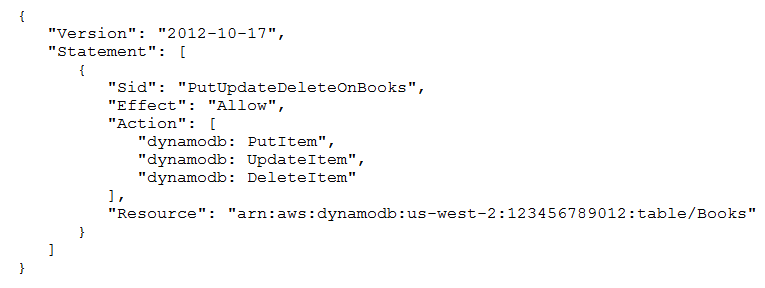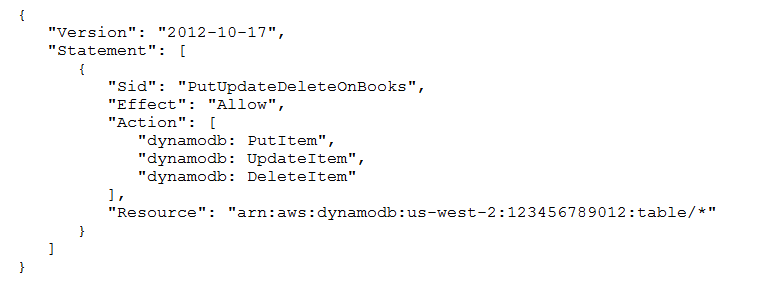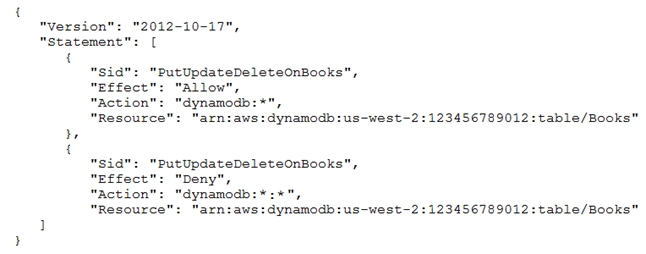

A company has implemented one of its microservices on AWS Lambda that accesses an Amazon DynamoDB table named Books. A solutions architect is designing an IAM policy to be attached to the Lambda function's IAM role, giving it access to put, update, and delete items in the Books table. The IAM policy must prevent function from performing any other actions on the Books table or any other.
Which IAM policy would fulfill these needs and provide the LEAST privileged access?
A.
B.
C.
D.
AbhiTyagi
Highly Voted 3 years, 8 months agosndychvn
3 years, 7 months agobill_smoke
3 years, 5 months agoKirik
3 years, 7 months agoPaitan
Highly Voted 3 years, 8 months agoexamJack
Most Recent 3 years, 2 months agoexamJack
3 years, 2 months agoGaurav_Aws
3 years, 7 months agoJack1313
3 years, 7 months agosyu31svc
3 years, 7 months agoKK_uniq
3 years, 7 months agomryala
3 years, 7 months agoAnkitrathi85
3 years, 7 months agoAEN
3 years, 7 months agomyutran
3 years, 7 months agoanikolov
3 years, 7 months agoarunchu
3 years, 7 months agoanpt
3 years, 7 months agodin_10009
3 years, 7 months agogsw
3 years, 8 months agowizrd049
3 years, 8 months agohanni123
3 years, 7 months agoppptttio89
3 years, 8 months ago